![]()
![]()
![]()
Use LEFT and RIGHT arrow keys to navigate between flashcards;
Use UP and DOWN arrow keys to flip the card;
H to show hint;
A reads text to speech;
60 Cards in this Set
- Front
- Back
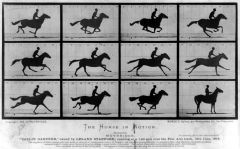
Eadweard Muybridge |
Horse in motion, photographed people (usually naked) in motion to show how body works, hired as a landscape photographer as well |
|
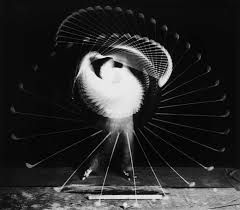
Harold Edgerton |
Also known for "milk corona" (pic of droplet of milk into water), scientist at MIT who invented the strobe, went to make many high speed photographs, and bullet piercing an apple |
|
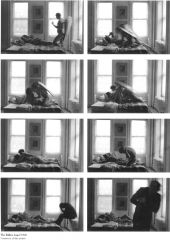
Duane Michals |
Decided in the 60's that he would create scenes and situations to be photographed, uses sequence images to tell story; interested in mysterious inexplicable areas of life |
|
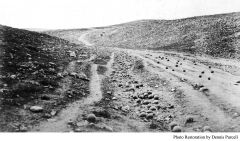
Roger Fenton |
British art photographer, commissioned to travel to the crimea to make pics of the War. Known for "Vally of Death" Avoided the grisly horrors of war |
|

Alexander Gardner |
Left Brady's corps and set up his own team of Civil War photographers, later photographed the excecution of Lincoln's assassins |
|
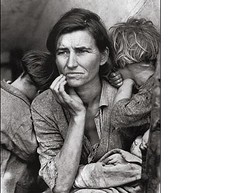
Dorothea Lange |
Migrant Mother |
|
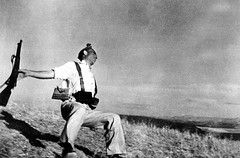
Robert Capa |
Combat photographer, "if it's not good enough, you're not close enough" Also photographed D-Day |
|
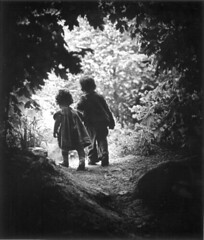
W. Eugene Smith |
Known for his commitment to his subjects and his skill developing photo-essays. Believed photojournalist could change the world, made pics in the Japanese village of Minamata |
|

Weegee |
Aka Arthur Fellig, known for his hard hitting sensational style of photographing fires, murders. Practically lived in his car, took pictures of individuals reacting to crisis, had police radio in his car. |
|
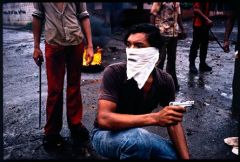
Susan Meiselas |
American photo-journalist, worked in Nicaragua during Sandinista revolution; rejected the idea of the objective reporter in favor of a more politically driven approach. Color film. |
|
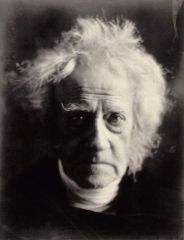
Julia Margaret Cameron |
British portrait photographer who also made many staged allegorical portraits/scenes. Often used soft focus, saying she stopped focusing when the image looked beautiful to her |
|

Henry Peach Robinson |
Photography's ability to distort the truth made it a viable art form. Used combination printing, coined the term "Pictorialism" |
|
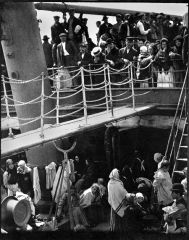
Alfred Steiglitz |
Published "Camera Work" mag, supported "modern" photography and "modern" art |
|
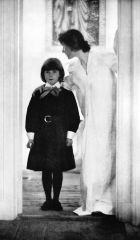
Gertrude Kasebier |
NY portrait photographer whose work was shown in first issue of Camera Work |
|

Paul Strand |
Promoted by Steiglitz, entire last issue of Camera Work devoted to his images |
|
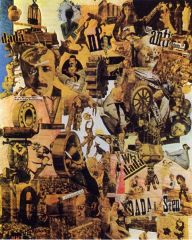
Hanna Hoch |
Dada artist who used photos in collages and photo-montages |
|
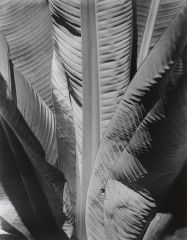
Imogeen Cunningham |
West coast photographer and member of f64 |
|
|
Etienne Jules Marey |
Inspired by Muybridge; took up photography to make motion studies of his own, called them "Chronophotography"; invented camera in form of a gun |
|
|
Anton Giulo & Arturo Bragaglia |
Futurists who rejected Marey's images because of their static nature, made motion studies with long exposire |
|
|
Marcel Duchamp |
Dada artist made painting titles "Nude Descending Staircase" |
|
|
John Whipple |
Made 1st photograph (a daguerreotype) of the moon |
|
|
Mathew Brady |
NY portrait photographer, formed corps of photographers to photograph the civil war but took credit for all photos causing people to leave group |
|
|
Timothy O'Sullivan |
Worked for Mathew Brady, and later Alexander Gardner during civil war |
|
|
John Thomson |
British photographer who made documentary pics in China, later in London (Street Life of London) |
|
|
The Farm Security Administration |
Run by Roy Stryker who hired photographer to make pics of the rural poor during the Great Depression
Included: Arthur Rothstein, Walker Evans, Mario Post Walcott, Russell Lee, Ben Shahn |
|
|
Erich Salamon |
Used Leica to make pics of German politicians, often from outside the building/room |
|
|
Roman Vishnaic |
Photographed inside Jewish Ghettos in Poland during Nazi era |
|
|
Magnum |
Co-op formed by a group of photographers (Capa and Brassan included) with the goals of allowing member photographers to work free of editorial demands and to regain control over the use of their images |
|
|
Margaret Bourke White |
Picture used for the cover of first LIFE magazine, well known photojournalist, who also photographed Germany after WWII |
|
|
LIFE Mag |
first published in the 1930's; featured photo-essays by noted photographers. Very popular until replaced by TV as a primary source of news |
|
|
Henri Cartier Bresson |
worked as photo-journalist, first used "the decisive moment' to refer to his goal of releasing the shutter at the climactic moment where form and content are equally powerful |
|
|
Don McCullin |
Brit pj, known for pics of devastating famine in Biafra and the Vietnam War. "First media war" |
|
|
Frances Benjamin Johnston |
Made pics of the Hampton Institute, school for african american youth |
|
|
Edward Curtis |
Photographed Native Americans; documenting what he thought was a vanishing race |
|
|
Jacob Riis |
Took pics of slums and tenements on lower east side of NYC hoping to promote better living conditions |
|
|
Lewis Hine |
Sociologist by training, driven by desire to change the "ills" he saw in the world. Pics of child laborers used to change child labor laws. Also took pics of building of Empire state building |
|
|
The Family of the Man |
Exhibition at MOMA in NYC |
|
|
John Heartfield |
German designer who made political photo-montage covers for socialist magazine AIZ |
|
|
Barbara Kruger |
American designer turned artist who uses the forms of advertising to make political statements, often feminist nature |
|
|
Carrie Mae Weems |
African American photographer made "joke" pieces |
|
|
Kristoff Wodiczko |
Projects images onto buildings, often political |
|
|
Jabez Hughs |
3 Catagories of Photography: Mechanical (simple representation of objects), Art (artists fuses his/her mind into things, artsy), High Art (aim for higher purpose; instruct, purify, enoble) |
|
|
Oscar Rejlander |
Art photographer that made combo prints "Two Ways of Life" combining 20 separate negatives (moral, non moral panoramic pic) |
|
|
Pictorialists |
Art photographers who in the early 1900's often made soft focus pics in order to create a painterly effect(Gum bichromate) |
|
|
Peter Henry Emerson |
argued that selective focus (setting lens slightly out of focus)was the road to "naturalistic photography" |
|
|
Edward Steichen |
Made pictorialist views with Gum Bichromate process |
|
|
Robert Demachy |
French pictorialist; enthusiast of gum bichromate |
|
|
F. Holland Day |
Pictorialist who photographed himself as Christ in Crucifixion series |
|
|
Frederick Evans |
Photographed English cathedrals (would sometimes stay overnight to get the pics of the early morning in the cathedrals as well) |
|
|
The Linked Ring |
Group of photographers seeking to escape the power held by the established photo societies |
|
|
The Photo Secession |
Breakaway group of photographers founded by Steiglitz |
|
|
Alvin Langdon Coburn |
Pictorialist turned "modernist"; made 'Vortographs' |
|
|
Film & Photo |
Name of international exhibition, took place in germany; played major part in post WWI reconstruction efforts. Machines caused devastation of war but could also rebuild it. |
|
|
Bahaus |
Art school in Dessau, Germany founded by Walter Gropius. Promoted interdisciplinary thinking and working methods |
|
|
Dada |
Driven by disenchantment w/ mainstream societal values and a desire to overthrow established approaches to art. Experimented with non-traditional materials and techniques and revealed in nonsense and the absurd |
|
|
Laszlo Moholy-Nagy |
Saw photography as a pivotal medium. First to use the term "New Vision". Instructor at the Bauhaus. Fascinated by possibilities of photograms |
|
|
Alexander Rodchenko |
Russian photographer who made use of extreme angles and photo-montage |
|
|
Man Ray |
American who moved to Paris in the 30's. Invented "Rayogram" now called "photogram" Upset when he found out he was not the first to invent or discover this. |
|
|
Edward Weston |
Travelled to NY, switched to pictorialism (Soft focus) to straight photography. From that point on all his pics were sharp focus, glossy paper bc they didn't allow retouching |
|
|
Harry Callahan |
Taught at Institute of Design in Chicago. Explored many subjects. Committed to an approach based on principles of seeing. |

